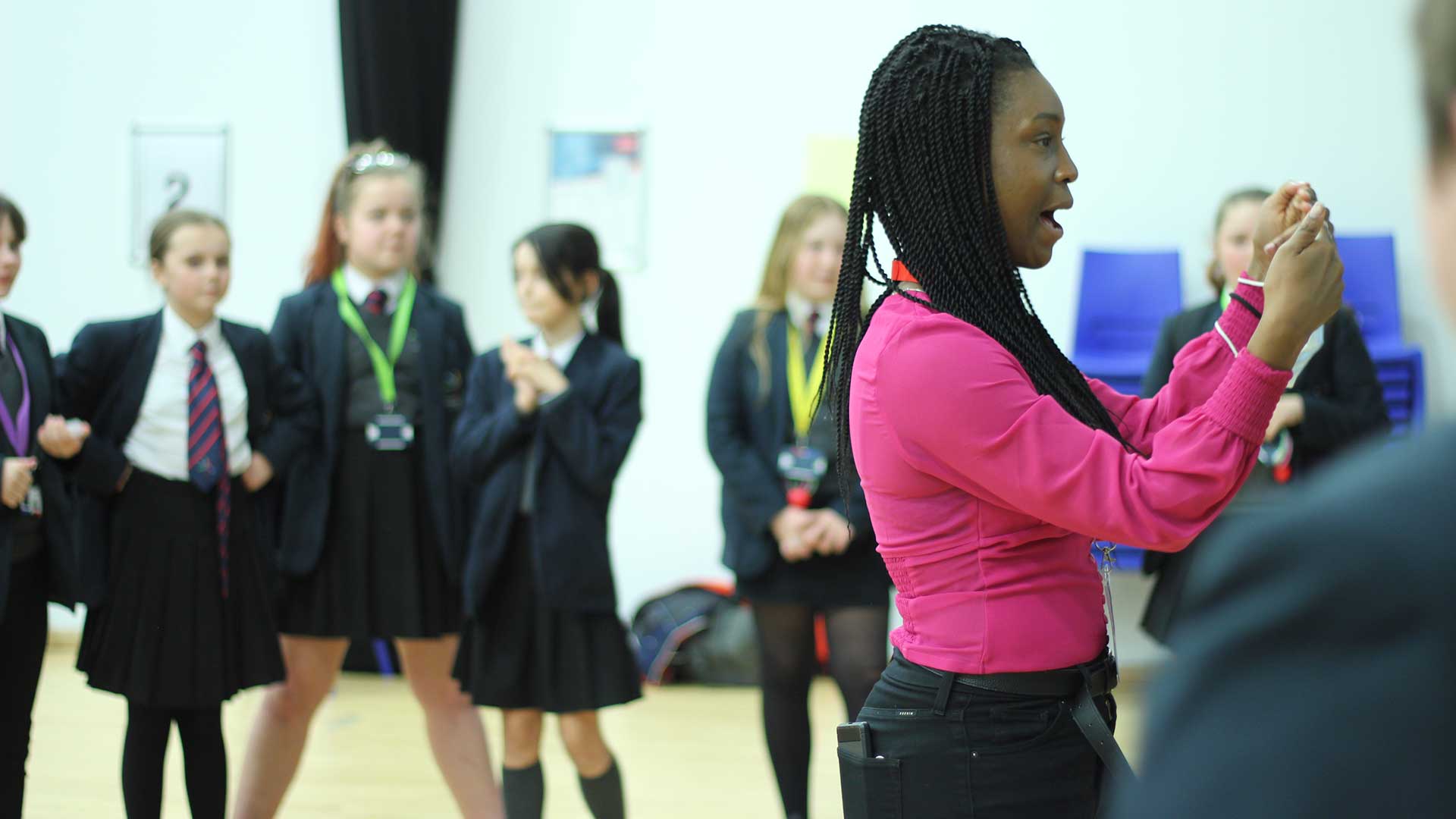
How Odd Arts unlocks creativity to empower young children
Rebecca Friel, Chief Executive of Manchester-based Odd Arts, describes how they develop young people’s creativity to gain greater understanding of themselves and the world around them.
Odd Arts delivers issue-based creative programmes for vulnerable and excluded groups. The company uses specialist applied theatre and creative techniques to address and explore contentious and challenging issues. Our focus is on developing a learning environment which both enables young people’s creativity, critical thinking and empathy as well as helping them to develop understanding and resilience to negotiate complex life challenges.
The themes we explore are nuanced, relevant and urgent. These include radicalisation, sexual assault and consent, exploitation, discrimination, violence and mental health. Some things are too painful, messy or inexplicable for young people to speak or write about. Creativity enables them to better understand these.
Four important approaches to cultivating creativity
These ideas underpin the way we support young people to access their own creativity.
1. Movement and space
At all costs we avoid traditional tables, chairs and rows. Instead we favour use of the floor, space and group circles.
Instead of writing our opinions we use the space for people to place themselves in areas that reflect a point of view. “Stand on this side if you agree…..and over this side if you disagree….. with my statement”.
Where possible we vary where and who young people are talking to and sitting next to, but instead of telling people to move, we play physical games that end with people in new areas of the room and then re-begin learning.
Engagement of body, space and movement is one way that enhances young people’s ability to be creative.
2. Experience beats information
By showing, seeing, hearing, feeling, embodying, touching and experimenting young people are more able to access their creativity. If we wanted to teach a skill we would physically provide the opportunity for young people to ‘do’ one small aspect of it, and once confident we would continue to add to the complexity a step at a time.
For example, if we wanted young people to create ‘a scene’ we would initially have them use their body to express a point of view; use their voice to say something that is the viewpoint of someone else; play a game that involves communication and interaction. By experiencing some of the components involved in a scene we are enabling people to access their own creativity in order to then complete the fuller creative task. A painting, mime, poem, character or dance (for example), can allow our bodies to explore things we might otherwise be blocked from understanding.
But before being able to do these creative things there are steps we must take to enable people to access their own creative confidence and understanding.
3. Fun!
In a report evaluating our work, the University of Central Lancashire said that Odd Arts “provided an opportunity for pleasure, freedom of thought and a sense of release that was obtained through being able to participate in the creative process”.
Equally, that creative process is accessed through fun. For us, fun is achieved through new experiences, variation, games, interaction with others, and laughter.
4. Safety
For those who are not practised in using their own creativity, or with complex vulnerabilities and low confidence, creativity feels like a huge risk. It is exposing as much as it is empowering. It can open wounds as well as heal them. If people feel unsafe, it is unlikely they will be able to access their creativity if they are not used to it already.
To us, safety means:
- Responding to individual needs and being flexible.
- Being trauma informed, trained to understand issues such-as abuse, discrimination, bereavement, and war, and committed to treating and responding to people as individuals.
- Considering group dynamics, able to sense existing conflict within the group and notice significant incidents affecting the mood of the group as well as seeing how some people work particularly well together.
- Being accessible (for people with diverse lived experience, faith, culture, physical ability and identity, as well as those who are neuro-diverse).
- Always utilising a two-facilitator team with experience. Not only does this mean that those we are working with are safer, because staff can draw on a wider range of experiences and tools to be able to respond and behave effectively and appropriately, but it also safeguards the staff while enabling them to bounce ideas off each other.
- Encouraging but never forcing the skills that can unlock creativity.
Once we have supported young people to access their creativity, we are then able to delve deeper through the arts and theatre into some of life’s most contentious challenges to explore realistic and practical solutions to them.